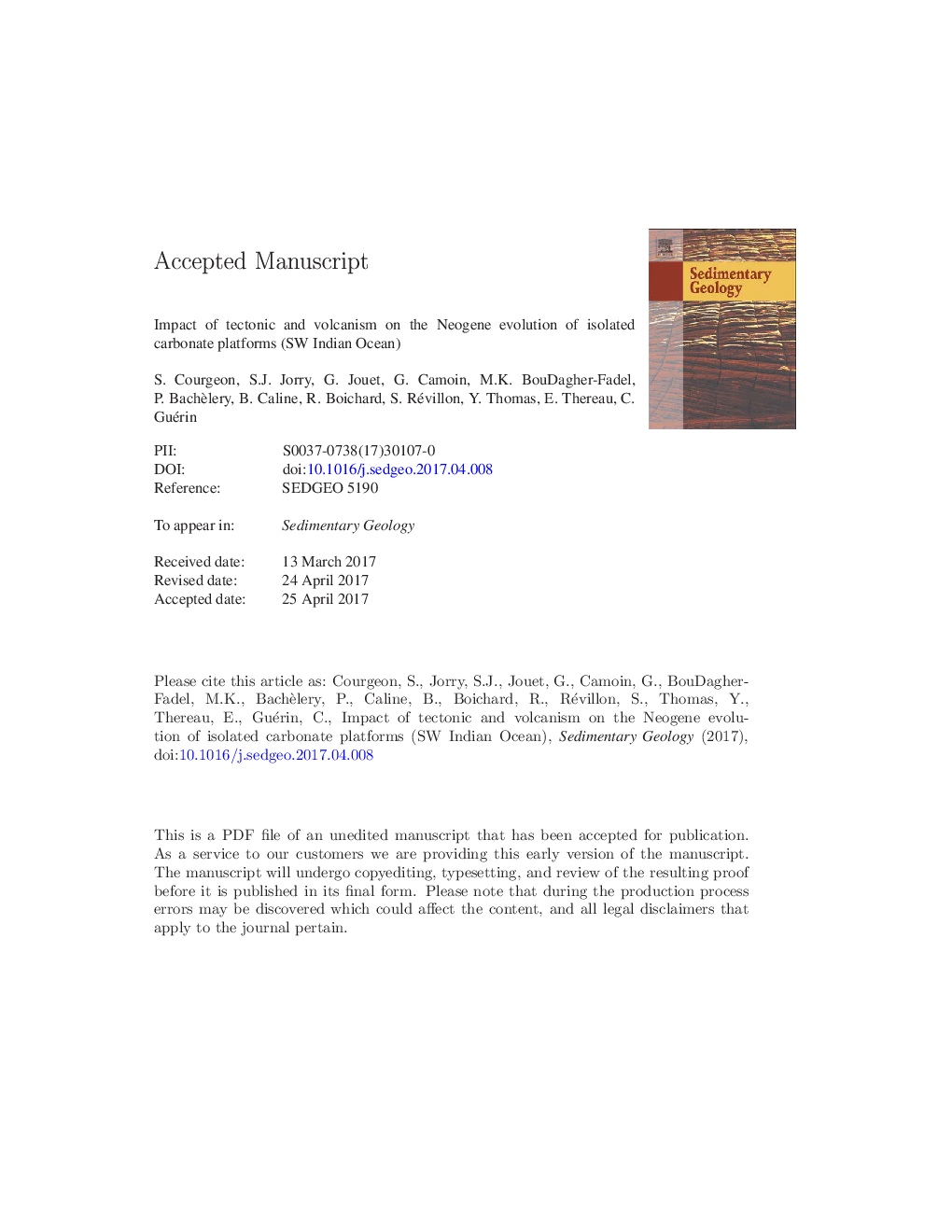| کد مقاله | کد نشریه | سال انتشار | مقاله انگلیسی | نسخه تمام متن |
|---|---|---|---|---|
| 5781361 | 1636008 | 2017 | 59 صفحه PDF | دانلود رایگان |
عنوان انگلیسی مقاله ISI
Impact of tectonic and volcanism on the Neogene evolution of isolated carbonate platforms (SW Indian Ocean)
دانلود مقاله + سفارش ترجمه
دانلود مقاله ISI انگلیسی
رایگان برای ایرانیان
کلمات کلیدی
موضوعات مرتبط
مهندسی و علوم پایه
علوم زمین و سیارات
فرآیندهای سطح زمین
پیش نمایش صفحه اول مقاله

چکیده انگلیسی
Understanding the impact of tectonic activity and volcanism on long-term (i.e. millions years) evolution of shallow-water carbonate platforms represents a major issue for both industrial and academic perspectives. The southern central Mozambique Channel is characterized by a 100Â km-long volcanic ridge hosting two guyots (the Hall and Jaguar banks) and a modern atoll (Bassas da India) fringed by a large terrace. Dredge sampling, geophysical acquisitions and submarines videos carried out during recent oceanographic cruises revealed that submarine flat-top seamounts correspond to karstified and drowned shallow-water carbonate platforms largely covered by volcanic material and structured by a dense network of normal faults. Microfacies and well-constrained stratigraphic data indicate that these carbonate platforms developed in shallow-water tropical environments during Miocene times and were characterized by biological assemblages dominated by corals, larger benthic foraminifera, red and green algae. The drowning of these isolated carbonate platforms is revealed by the deposition of outer shelf sediments during the Early Pliocene and seems closely linked to (1) volcanic activity typified by the establishment of wide lava flow complexes, and (2) to extensional tectonic deformation associated with high-offset normal faults dividing the flat-top seamounts into distinctive structural blocks. Explosive volcanic activity also affected platform carbonates and was responsible for the formation of crater(s) and the deposition of tuff layers including carbonate fragments. Shallow-water carbonate sedimentation resumed during Late Neogene time with the colonization of topographic highs inherited from tectonic deformation and volcanic accretion. Latest carbonate developments ultimately led to the formation of the Bassas da India modern atoll. The geological history of isolated carbonate platforms from the southern Mozambique Channel represents a new case illustrating the major impact of tectonic and volcanic activity on the long-term evolution of shallow-water carbonate platforms.
ناشر
Database: Elsevier - ScienceDirect (ساینس دایرکت)
Journal: Sedimentary Geology - Volume 355, 15 June 2017, Pages 114-131
Journal: Sedimentary Geology - Volume 355, 15 June 2017, Pages 114-131
نویسندگان
S. Courgeon, S.J. Jorry, G. Jouet, G. Camoin, M.K. BouDagher-Fadel, P. Bachèlery, B. Caline, R. Boichard, S. Révillon, Y. Thomas, E. Thereau, C. Guérin,